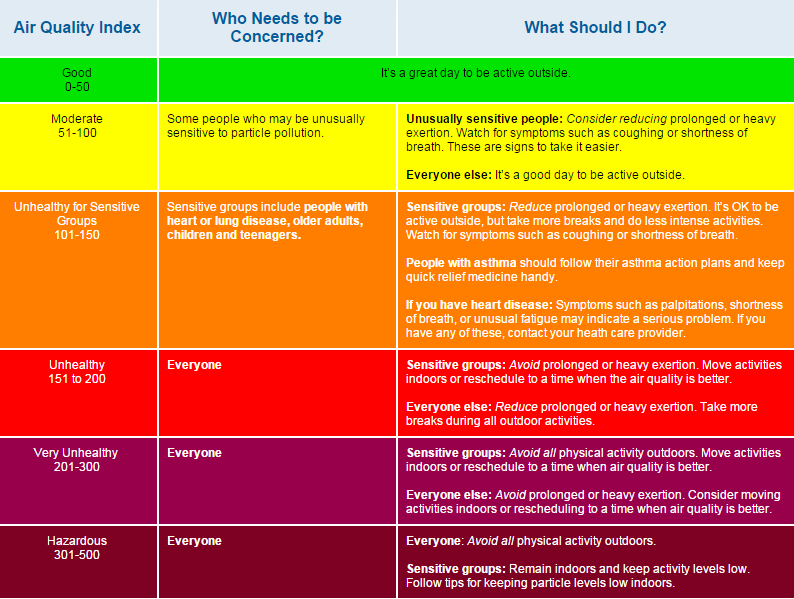Air Quality Update
CT DPH Air Quality Information
The Northeast region of the United States continues to experience the air quality impacts of the ongoing wildfires in Canada. The air quality index (AQI), a measure of pollutants and other air quality metrics has fluctuated significantly in Connecticut as a result of the wildfires.
Air quality levels are likely to fluctuate throughout each day. The situation may change based on changes in wind patterns and the ability to control or stop the wildfires in Canada. Therefore, it’s important to monitor air quality regularly and be prepared to take precautions as the situation changes.
If air quality worsens, closing doors and windows can help keep the smoke out of homes and businesses. N95 and KN95s can help filter smoke, so you can consider wearing those outdoors if/when the air quality is poor.
You can find hourly updates on the air quality in our area by visiting https://www.airnow.gov/ and typing in the zip code.
The table below describes actions to take to reduce exposure at different air quality levels.
Please note: Sensitive (at-risk) groups include people with heart or lung disease, older adults, children, pregnant people, and people who spend a lot of time outdoors.

Table from US Environmental Protection Agency
For More Information:
- Connecticut State Department of Public Health: Air Pollution
Air pollution is a concern for all of us. The Connecticut State Department of Public Health has compiled resources on Air Quality Index (AQI), Particulate Matter (PM) Air Pollution and ways you can protect your family.
- Connecticut State Department of Public Health: Air Quality
Air pollution can be a substantial trigger for people living with asthma, particularly in urban areas. The Connecticut State Department of Public Health has compiled resources on different types of air pollutants and how you can protect yourself from air pollutants at home.
- Air Quality and Health
You can find hourly updates on the air quality in our area by visiting AirNow and typing in your zip code.
- CDC Info on Wildfires and Smoke
Wildfire smoke can harm you in multiple ways. Smoke can hurt your eyes, irritate your respiratory system, and worsen chronic heart and lung diseases. This fact sheet tells you how you can protect your health and be safe if you are exposed to wildfire smoke.
- CT Dept of Energy and Environmental Protection
A key tool in understanding the health effects associated with outdoor air quality is the Air Quality Index, or AQI. When AQI values are above 100, air quality is considered to be unhealthy. The CT DEEP issues the AQI daily, to provide the citizens of Connecticut simple information on local air quality. More information on the AQI and health effects can be found on this website.
- CT Resource Guide for Local Health Officials during periods of wildfire smoke & poor Air Quality
Wildfire smoke and poor air quality events can occur without warning – but we can be prepared. This Guide is intended to provide state, tribal, and local public health officials with the information they need to be prepared for smoke and other poor outdoor air quality events.
- WILDFIRE SMOKE: A GUIDE FOR PUBLIC HEALTH OFFICIALS
This Guide is intended to provide state, tribal, and local public health officials with information they need to be prepared for smoke events and, when wildfire smoke is present, to communicate health risks and take measures to protect the public.
- Guidance for Outdoor Activities
Harmful particle pollution is one of our nation’s most common air pollutants. Use this chart to help reduce your exposure and protect your health.
- Tips for Outdoor Workers
Health tips for outdoor workers during poor air quality days.

